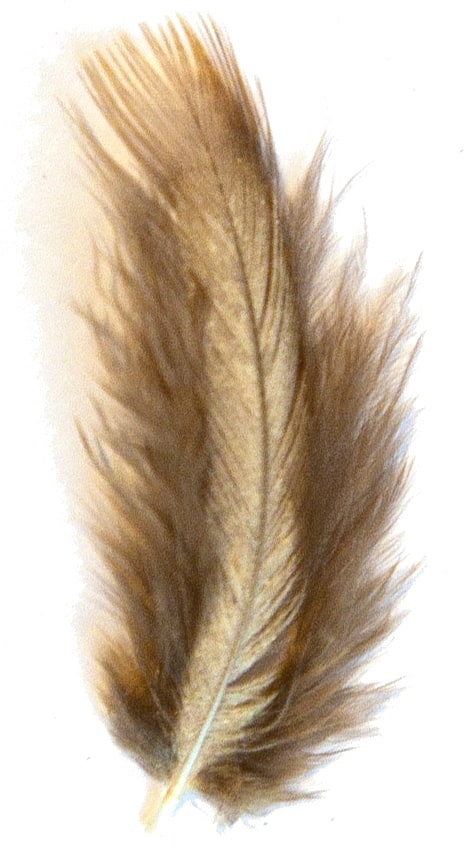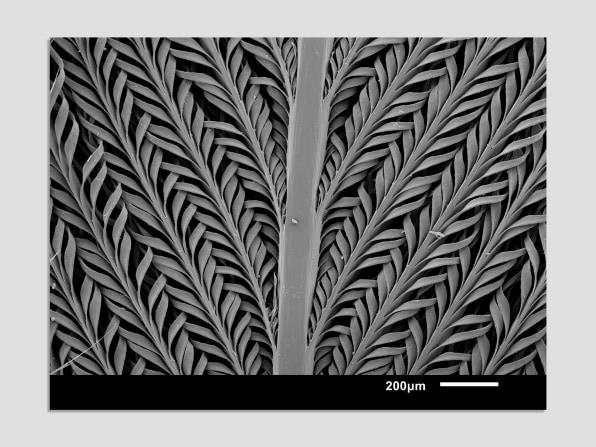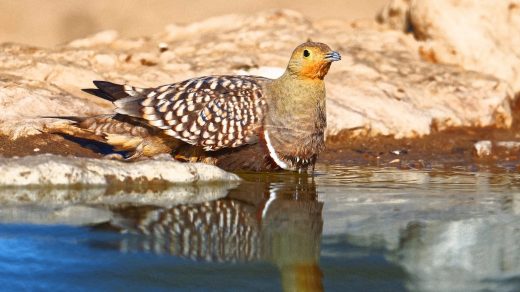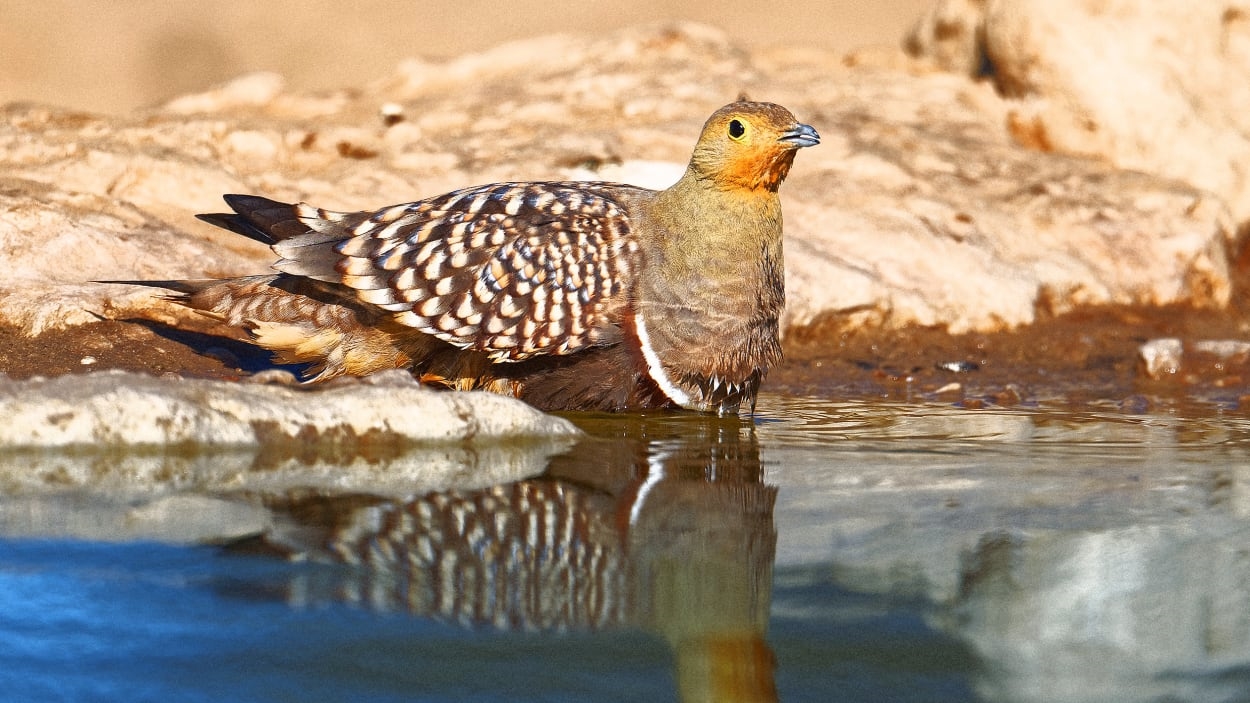This desert bird’s feathers could inspire a new, slosh-free water bottle
Sometime in the future, the water bottle you carry on a run, or the nasal swab you brave at the health center, could be inspired by the feathers of an African desert fowl.

The desert sandgrouse has a very particular way of absorbing and transporting water inside its feathers. After studying the birds’ system, engineering researchers at Johns Hopkins University think they can imitate the inner workings of the grouse feathers for use in various commercial applications.
Living in arid regions in the shrubs and short grasses of South Africa, Botswana, and Namibia, the sandgrouse has to rely on traveling long distances for water. Predators lurk by the sparse watering holes, all too aware that their potential prey is thirsty. So the sandgrouse keeps its offspring in safety up to 19 miles away, and the male travels back and forth each day to provide them with water.
Out of evolutionary necessity, the sandgrouse has developed a clever way to carry the water: by storing it in its plumes. It walks into shallow water, fluffs its feathers, dunks its belly in, and rocks back and forth. It soaks up as much as 25 milliliters (0.85 ounce)—which may not sound like much, but it’s actually 15% of its body weight—with which it’s able to fly back at 40 mph. When it returns, its young suck the water directly from the feathers with their beaks.
This system is unique to the sandgrouse and its subspecies in other parts of the world. Naturally, most birds have water-repellent feathers. “Birds don’t want to get wet and heavy because that limits their flying capabilities,” says Jochen Mueller, the study’s coauthor and an assistant professor in the department of civil and systems engineering at Johns Hopkins.

Zooming in and looking at them at a microscopic level explains the special ability. The engineers used various 2D and 3D microscopes to view feathers donated by the Harvard Museum of Comparative Zoology and the Los Angeles Natural History Museum, from stuffed sandgrouses (and other birds for comparison) that lived long ago.
They saw that as feathers enter water, microscopic coiled structures within automatically suck up the fluid using capillary action through tiny tubes. The water spreads throughout the feather, and the wet tubes uncoil and expand, absorbing water like a sponge, while those on the tip of the feather remain dry and coiled. That surface layer acts almost like a bottle cap, retaining the trapped moisture within.
This innate technology may have commercial applications. “This doesn’t mean we’re going to use actual bird feathers, or even copy-paste mechanisms,” Mueller says. It’s rather about finding inspiration in the biological tech for engineering products, typically with 3D printers, which is the focus of his lab work.
The uses would likely be niche, but could be effective in solving specific problems. Athletes may find it cumbersome to carry water bottles that slosh around as they run. Instead, a bottle design inspired by the tech might utilize lessons from the geometry of the dense forest of coils, and from the materials—like keratin—that cause the coils to act as they do.
Researchers in the lab may even improve upon the birds’ method. While the sandgrouse can’t help losing half the water it carries due to evaporation and movement, perhaps a bottle that’s completely encapsulated in the coil structure could be engineered in the lab, optimizing it to retain liquid more sturdily.
“There are a lot of parameters to play with, which creates a lot of complexity but also a lot of opportunity in creating such microstructures,” Mueller says. The biggest hurdle, he adds, will be engineering large products that hold sufficient amounts of fluid out of such microscopic structures, and scaling them affordably.
But one small yet very relevant use in today’s world could be for nasal swabs. The cotton swabs to which we grew accustomed in the COVID-19 era work decently, but Mueller says a grouse-inspired material and structure could allow swabs to absorb the liquid samples more efficiently, and release them more expediently for testing in the lab.
(8)



